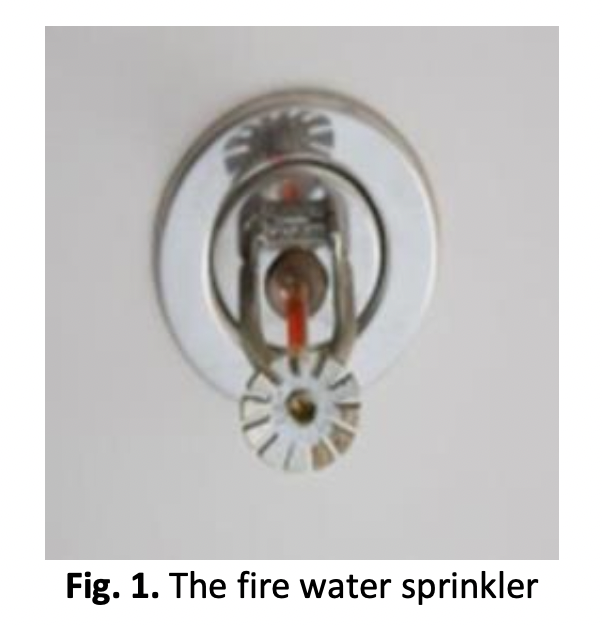Simulation Analysis for the Distribution of Fire Water Sprinkler
DOI:
https://doi.org/10.37934/cfdl.15.11.110117Keywords:
Computer fluid dynamics (CFD), Fire Water Sprinkler, distribution of discharged water, simulationAbstract
Fire Water Sprinkler is one of reliable equipment to control fire in building. This equipment also known as a simple and cost-effective method to control fire growth in a building. The systems work by blowing the water droplet into the burning area. The objective of this project is to analyse the behaviour and distribution of discharged water from fire water sprinkler. The computer fluid dynamics (CFD) is used to study the dispersion of water into the room or case study area. However due to limitation of study, this simulation only carried out by using a room and single fire water sprinkler. This also important factor as the validation of the model is based on previous study. In addition, the project also to determine the effect of different operating pressure on water discharged from fire sprinkler. The project started with the data finding. It was important to identify the reference data to ensure the generate result was reasonable. The input water inlet pressure is in the range of 10 to 15 bar. The geometry of room was set to 4.0 m x 3.0 m x 4.0 m. The fire was assumed to start at the rectangular table which is the dimension is 1.0 m x 1.0 m and 0.5 m above the floor in the middle room. For boundary condition, the inlet parameter is velocity and the input magnitude set at 44.7 m/s under 10 bar. 1000 number of iterations was set in this project. The results showed the model of 15 bar operating pressure was managed to dispense the water jet down to rectangular table. The 15 bar operating pressure of the model has greatest velocity discharged up to 12.896 m/s. As conclusion, the operating pressure was affected the discharged of the water velocity. The increase of the operating pressure was led to greater water velocity discharged.
Downloads
References
Link, E. D., S. J. Jordan, T. M. Myers, P. B. Sunderland, and A. W. Marshall. "Spray dispersion measurements of a sprinkler array." Proceedings of the Combustion Institute 36, no. 2 (2017): 3305-3311. https://doi.org/10.1016/j.proci.2016.06.056
Ren, Ning, Howard R. Baum, and André W. Marshall. "A comprehensive methodology for characterizing sprinkler sprays." Proceedings of the Combustion Institute 33, no. 2 (2011): 2547-2554. https://doi.org/10.1016/j.proci.2010.06.107
Myers, Taylor, Arnaud Trouvé, and Andre Marshall. "Predicting sprinkler spray dispersion in FireFOAM." Fire safety journal 100 (2018): 93-102. https://doi.org/10.1016/j.firesaf.2018.07.008
Beji, Tarek, Setareh Ebrahim Zadeh, Georgios Maragkos, and Bart Merci. "Influence of the particle injection rate, droplet size distribution and volume flux angular distribution on the results and computational time of water spray CFD simulations." Fire Safety Journal 91 (2017): 586-595. https://doi.org/10.1016/j.firesaf.2017.03.040
Wang, Zhen, Wenhe Wang, and Qingsheng Wang. "Optimization of water mist droplet size by using CFD modeling for fire suppressions." Journal of Loss Prevention in the Process Industries 44 (2016): 626-632. https://doi.org/10.1016/j.jlp.2016.04.010
Yuan, Liming, and Alex C. Smith. "Numerical modeling of water spray suppression of conveyor belt fires in a large-scale tunnel." Process safety and environmental protection 95 (2015): 93-101. https://doi.org/10.1016/j.psep.2015.02.018
Trapp, Andrew C., and Ali S. Rangwala. "Analyzing the impact of in-rack sprinklers in a warehouse fire: A demonstration of the role optimization has in mitigating damage." Fire Safety Journal 73 (2015): 55-62. https://doi.org/10.1016/j.firesaf.2015.03.002
Marshall, A. W., and M. Di Marzo. "Modelling aspects of sprinkler spray dynamics in fires." Process Safety and Environmental Protection 82, no. 2 (2004): 97-104. https://doi.org/10.1205/095758204322972744
Jahn, Wolfram. "Using suppression and detection devices to steer CFD fire forecast simulations." Fire Safety Journal 91 (2017): 284-290. https://doi.org/10.1016/j.firesaf.2017.03.062
Aghajani, Hamed, Siaka Dembele, and Jennifer X. Wen. "Analysis of a semi-empirical sprinkler spray model." Fire safety journal 64 (2014): 1-11. https://doi.org/10.1016/j.firesaf.2014.01.004



























